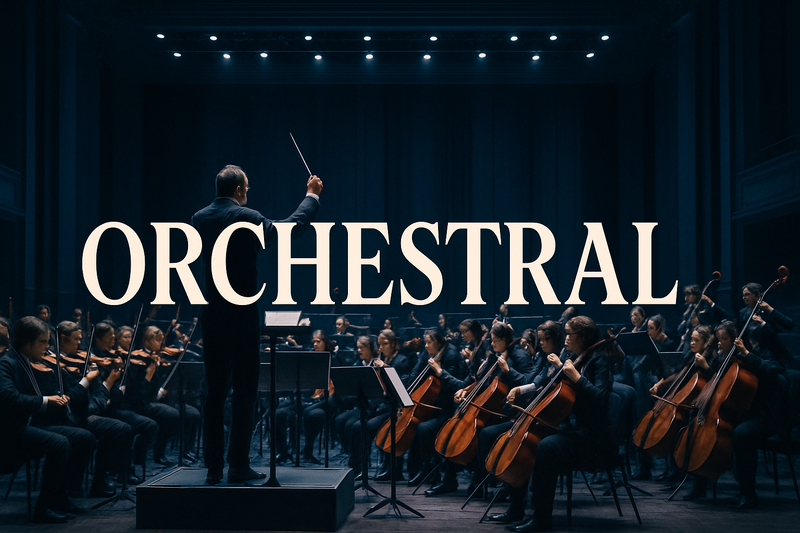Episode at a Glance
From Baroque courts to Romantic concert halls, from Mahler’s symphonic universes to John Williams’ cinematic themes — orchestral music is the heartbeat of Western tradition. In this episode, Daniel and Annabelle trace how the orchestra grew from small ensembles into a colossal force capable of whispering, roaring, and painting entire worlds in sound. We explore its history, instruments, conductors, rituals, masterpieces, cultural influence, and its ongoing evolution into the 21st century.
The Hosts
Daniel: Rock and metal devotee, fascinated by the hidden stories behind riffs, symphonies, and cultural shifts.
Annabelle: Drawn to pop, soul, and Latin grooves — for her, orchestral music is community, imagination, and emotional storytelling.
Setting & Zeitgeist
- Baroque beginnings: Monteverdi, Vivaldi, and Bach shaping early ensemble drama.
- Classical clarity: Haydn, Mozart, and Beethoven building the symphonic framework.
- Romantic expansion: Tchaikovsky, Brahms, Wagner, Mahler — passion, nationalism, universes in sound.
- 20th century shocks: Stravinsky’s riotous Rite of Spring, Shostakovich’s coded protest, Debussy & Ravel’s impressionistic colors, Copland’s wide American landscapes.
- Everyday presence: Film scores, advertising, video games, Olympic fanfares, memes — orchestral sound lives far beyond concert halls.
The Sound of the Orchestra
- Strings: The emotional backbone — from whispered intimacy to sweeping grandeur.
- Woodwinds: Color and personality — birdlike flutes, plaintive oboes, chameleon clarinets, comic bassoons.
- Brass: Majestic, terrifying, triumphant — horns, trumpets, trombones, tuba.
- Percussion: Drama, rhythm, brilliance — from timpani thunder to delicate sparkle.
- Unity in diversity: Many instruments, one voice — an orchestra as a living organism.
Suggested Listening
- Beethoven — Symphony No. 5 (1808), Symphony No. 9 (1824)
- Berlioz — Symphonie fantastique (1830)
- Wagner — The Ring Cycle (1850s–1870s)
- Tchaikovsky — Swan Lake (1877), Symphony No. 6 (1893)
- Mahler — Symphony No. 2 “Resurrection” (1895), Symphony No. 8 (1910)
- Stravinsky — The Rite of Spring (1913)
- Holst — The Planets (1918)
- Copland — Fanfare for the Common Man (1942)
- Orff — Carmina Burana (1937, esp. O Fortuna)
- John Williams — Star Wars Main Theme (1977), Harry Potter (2001)
Core Ideas in This Episode
- The orchestra as a mirror of humanity: Love, grief, protest, joy, and memory made audible.
- Conductor as interpreter: Bridging composer, musicians, and audience through gesture.
- Ritual & performance: From tuning A to collective silence, orchestral concerts are ceremonies.
- Cultural DNA: The orchestra shaped jazz, rock, film, and even video games.
- Adaptability & future: Streaming, VR, global composers — orchestral sound is timeless and evolving.
Takeaway
The orchestra is more than tradition — it’s a living, breathing universe of sound. It has carried revolutions, rituals, cinema, and everyday life for centuries, adapting to every era without losing its essence. Whether in Vienna’s Musikverein, a London park, a Marvel movie, or a TikTok meme, orchestral music remains the sound of humanity at its most expansive — a reminder that harmony is possible, and that sound can hold the weight of history, culture, and the human soul.
